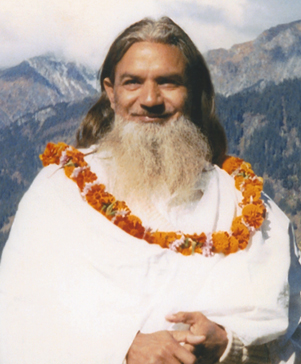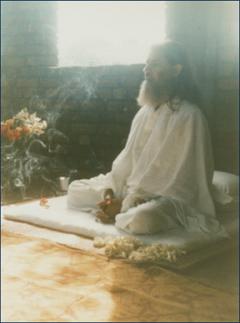Swami Amar Jyoti

Swamiji stayed in Kolkata for some time. He then shifted to a quiet ashram on the outskirts of the city. At the same time, divine visions began to occur inside him. He began to meditate and practiced yoga. Soon after, he became conscious of his life’s mission. As described by Swamiji, he started from where he had left unfinished in his previous life. Soon he left for the Himalayas. There he did spiritual practices for about 10 years. Over the years, he walked miles and miles in order to visit many places of pilgrimage. Finally, in a small cave in Gangotri, he attained supreme spiritual realization and enlightenment. The year was 1958.
After that, Swamiji took 'Vidyut Sanyas' at Badrinath Dham in the Himalayas. In this rare process, the person initiates himself, rather than taking help from a guru. He assumed the name 'Swami Amar Jyoti'. He then came down to the plains of India to fulfill the God-ordained work in the world. Ever since he left home, his mother had not stopped looking for him and waiting. Swamiji met his mother in Mumbai. According to his mother's wishes, he established his first ashram in Pune (Maharashtra) 1962, which is known as 'Jyoti Ashram'. It is run by 'Anand Niketan Trust'. After that, Swamiji established two more ashrams in India. 'Rishi Ashram', Manali (Himachal Pradesh), 1978 and 'Ganga Ashram', Uttarkashi (Uttarakhand), 1990. He also ran an ashram in Delhi for a few years in the eighties. In addition, Swamiji established a school called ‘Chetana Vidya Mandir’ in 1964, little outside Pune city. His aim was to inculcate Vedic culture in the children from an early age. But a few years later, when he felt that the activities were distracting him from his original goal, he closed the school.

.jpeg)
For nearly four decades, Swamiji conducted satsangs and spiritual retreats (self-reflection camps) in India, America and other countries. He always used to say, "Performing miracles in order to gather crowds, or to gain fame has never been the purpose of my life. I will select a few but ensure that they progress a long way on the path to self-realization." After forty years of relentless propagation of Sanatan Dharma, Gurudev took Mahasamadhi on June 13, 2001 in the city of Louisville, Colorado, USA. As per his wishes, his ashes were brought to Jyoti Ashram in India. It was in this ashram that his tomb, pyramid-shaped and made of pure white marble, was constructed. In May 2005, a life-size statue of white marble was installed at the same mausoleum (Samadhi sthal).
Gurudev's recorded satsangs (Hindi and English) and many books written by him are available. Information about these satsangs and books will be found on the website of Jyoti Ashram. Contact Jyoti Ashram, Pune for more details.